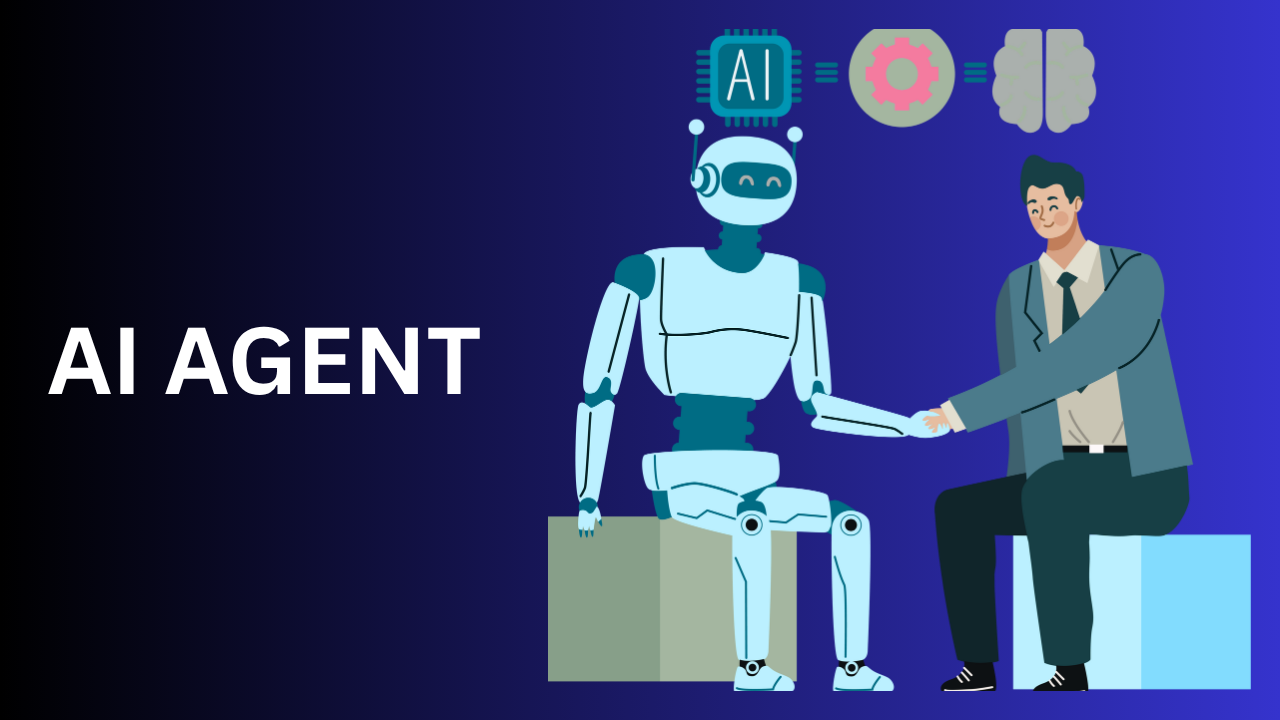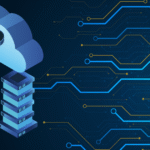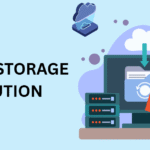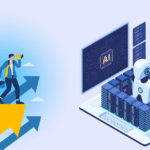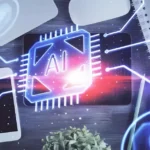AI agent are software systems which use AI to accomplish objectives and accomplish jobs on behalf of people. They demonstrate reasoning planning and memory and possess certain amount of autonomy to take decision grow and adjust.
The capabilities of AI are supported mostly due to multimodal capability in generative AI and AI foundation models. AI agent are capable of processing multimodal information like text audio video voice codes etc. at same time.
They can communicate and reason as well as learn and even make choices. They are able to learn as they go and help facilitate business transactions and procedures. Agents are able to collaborate together with their colleagues to collaborate and execute more intricate processes.
Some of key features in AI agent
In previous paragraph primary characteristics in an AI agent include reasoning as well as acting (as as described in ReAct Framework) additional functions have developed over time.
- Reasoning: This fundamental cognitive function requires the use of logic and data to draw conclusions, draw inferences, and resolve issues. An AI agent with strong reasoning capability can process data spot patterns and make informed choices using evidence and contextual information.
- acting: ability to perform tasks on basis of decisions and plans or other external input is vital to allow AI agent to interact with their surroundings to achieve objectives. It could be physical actions as in case in case of embodied AI or digital actions like sending out messages and updating data or initiating other actions.
- The act of observing: collecting details about surroundings or situation via perception as well as sensing is crucial to AI agent to comprehend their surroundings and take educated decision. It can be a matter of different types of perception.. that include computer vision natural language processing, sensors or analysis.
- Planning: Making strategy based program to meet goals you want to achieve is one of the most important aspects of intelligence driven behaviour. AI agent equipped with planning abilities can determine essential steps to take, assess potential outcomes, and decide an appropriate plan of action based upon available data and outcomes. The process often involves anticipating possible future events and assessing issues.
- Collaboration: effectively with other people be it humans or AI agent in order to reach an end goal.. that is common to all of us has become ever more crucial in todays complex and ever changing contexts. Collaboration demands collaboration communication as well as ability to comprehend and accept views of other people.
- Self refining: capacity to self improvement as well as adaptation is hallmark of modern AI technology. AI agent with self refining capabilities have ability to gain knowledge from previous experiences and adjust their behaviour in response to feedback and continually improve performance and capabilities as time passes. This could be done through machine learning techniques optimization algorithms and other types of self improvement.
The most important elements for AI Agent architecture
Artificial intelligence agents can work in different settings to serve different purposes. But all agents.. that are functional are based on these elements.
Architecture
Architecture forms basis.. that of system.. that it operates on. Its architecture may be physical structure software program or both. As an example robot AI agent is comprised consisting of actuators sensors motors as well as robotic arms. In addition architecture with AI software agent can employ use of text prompt API as well as databases for autonomous operation.
Agents function
Agent functions define how agent function describes how information gathered is transformed into actions which help agent achieve its goal. In designing an agent function developers consider types of information needed AI capabilities knowledge base feedback mechanism and any other tools required.
Agent program
A agent program is implementation of agent function. It includes developing training and then deploying AI agent on specified architecture. This agent program aligns agents technological requirements business logic as well as performance components.
What is process by which AI agent function?
Each agent is able to define their character role and manner of communicating with specific guidelines and explanations of readily tools available. tools.
- Persona: a clearly defined persona lets an agent remain consistent in their character and act in way that is appropriate for the role it was assigned, changing as an agent grows in experience and becomes more familiar with the environment.
- Memory: agent is generally equipped with short and long term as well as consensus and episodic memory. Short term memory to handle immediate interactions and long term memory for data from past as well as conversations as well as short term memory for interactions in the past, as well as consensus memory.. that allows for sharing information among agents. Agents are able to keep their context of their interactions gain knowledge from previous experiences, and increase performance through recalling previous interactions as well as adapting to a new environment.
- Tools: Tools are tools or other external resources agent may use to communicate with its surroundings and improve capabilities of its. They permit agents to complete complicated tasks such as accessing information by manipulating data, accessing information or manipulating external systems and they can be classified according to their user interface.. which includes graphical, physical, as well as programs-based interfaces. Tools learning is process of teaching users how efficiently make use of tools through understanding their functions and their contexts in where they can be used.
- Model: Large language models (LLMs) are base for developing AI agent.. that provide capacity to think understand and then act. LLMs are an agents “brain” of an agent.. that allows agent to process and create words while other parts help to reason and take actions.
Different types of AI agent
AI agent are able to be created with varying degrees of abilities. An easy agent could be ideal for simpler objectives to reduce amount of computational complexity. From simplest to advanced There are five primary agent types:
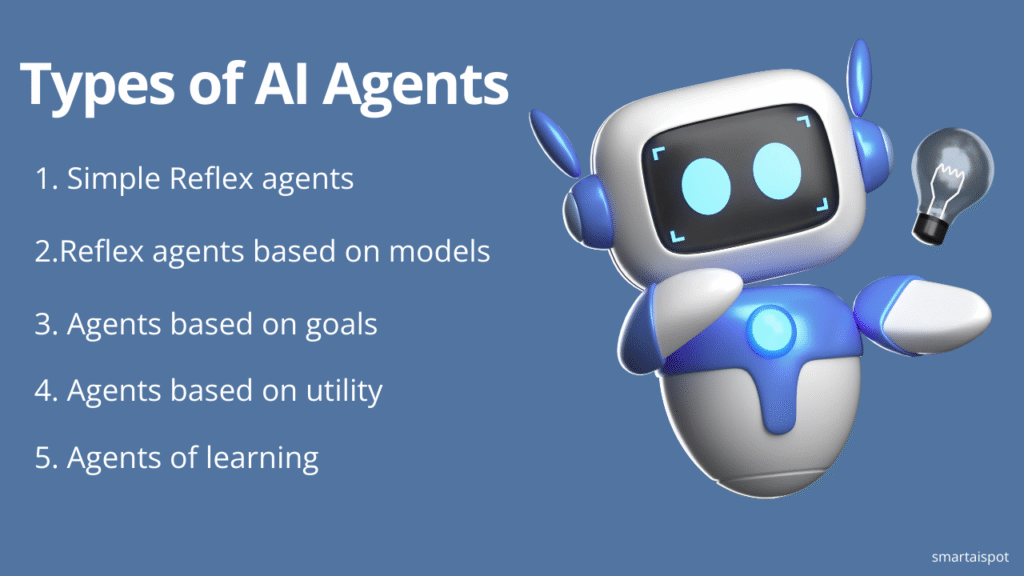
1. Simple Reflex agents
Simple reflex agents comprise simple agents.. that base their actions based by perception. It does not have any memory or connect with other agents if there is no data. agents operate with series of”reflexes” or rules. This means.. that agents are preprogrammed to carry out actions which correspond to specific conditions.. that are met.
In event.. that an agent comes across an event.. that agent is not ready for it is unable to respond in timely manner. agents can be effective in situations.. that are completely visible allowing access to all needed information.6
Example: If its 8 pm heating system is turned on for instance thermostat turns on heating system an hour every at night.
2. Reflex agents based on models
Model based reflex agents make use of their present perception as well as their memory to build their internal models of their world. While agent continues learn new information their model gets updated. Agents actions are based upon its model responses past precepts and present state.
The agents as opposed to simple reflex agents can save information into memory and function in situations.. that are visible and dynamic. But they remain restricted by their own set of rules.6
Example: robot vacuum cleaner. When it vacuums up messy space it detects obstructions like furniture and makes adjustments to these obstacles. It also keeps an image of area which its already cleared to avoid getting stuck in cycle of cleaning.
3. Agents based on goals
Goal oriented agents possess an internal representation of universe and goals or sets of goals. They search for sequences of actions.. that achieve their desired goal and they plan those actions prior to acting upon their plans. These actions as well as planning enhance their efficiency when they are compared with simple models and reflex agents.
An example of a navigation system that recommends the most efficient route to reach your destination. The model takes into consideration different routes to get you there, which is, in essence, the goal. In this instance condition action rule of the agent declares that in the event that a more efficient option is discovered, the agent will recommend an alternative route.
4. Agents based on utility
Agents based on utility choose appropriate sequence of actions to achieve objective and optimize reward or utility. calculation of utility is done using an utility function. utility function assigns value measurement of effectiveness of an action or extent to which “happy” makes agent for each situation.. that is based on set predetermined standards.
These criteria could include things like progress towards desired goal timing requirements as well as computational complexity. agent selects most effective actions to maximize effectiveness. Thus they are helpful in scenarios where multiple options are available to achieve desired goal and most optimal option must be selected.7
Example Example: navigation system.. that recommends way to get there.. that maximizes fuel efficiency while reducing amount of time you spend on road and also cost of tolls. agent evaluates utility using set of rules in order to determine most efficient way to travel.
5. Agents of learning
Learning agents possess similar capabilities to different agent types but are unique in their capacity to grow. new experiences they encounter are added to existing knowledge base.. that is created in way.. that is completely autonomous.
The process of learning improves ability of agents to work in unfamiliar settings. Agents learning may have goal or utility based basis on their reasoning and consist of following four elements:
- learning: This process improves agents knowledge through learning from its surroundings through use of precepts as well as sensors.
- Critic: component gives feedback to the agent about how well its answers is up to the performance benchmark.
- performance: This element is one responsible for choosing actions based on learning.
- Generator of problems: This program generates different ideas for actions.. that should be undertaken.
Examples: personalized recommendations for e-commerce websites. Agents monitor user activities as well as their preferences in their memory. data is then used to provide recommendations for specific items and services to users. Every time new recommendations are issued. Every day, users’ actions are recorded for learning purposes. By doing this, it improves agents’ performance over time.
Agent categories and types
Based on interactions
The best way to classify agents is to determine way they interact with their users. Agents may engage in conversation with user directly whereas others work behind scenes performing tasks.. that do not require direct input from users:
- Interactive partner (also referred to as surface agents) Helping us with duties like customer service healthcare education and science discovery. They provide personalized and intelligent assistance. Conversational agents can be described as questions and answers chat rooms and global knowledge exchanges with other humans. They typically respond to user queries activated and respond to user requests or transactions.
- Background processes.. that are autonomous (also known as background agents) work in background to automate mundane tasks examine information to gain insights improve procedures to improve efficiency as well as be proactive in identifying and addressing potential problems. These include workflow agents. They do not have any or very little human interaction and are typically controlled by events they happen to and perform queued task or chain of jobs.
Based on number agents
- single agent as unit of operation in order to accomplish particular goal. They use external tools as well as resources to perform tasks and enhance their capabilities across range of different contexts. Theyre ideal for tasks.. that are well defined and are not dependent on cooperation with any other AI agent. Only has one basic model.. that it processes.
- Multi agent multiple AI agent.. that collaborate or cooperate to accomplish shared goal or personal goals. systems make use of various capacities and functions of each agents to solve complex problems. Multi agent systems replicate human behaviours including interpersonal communications through interactive situations. Each agent has its own base models to best suit needs of each agent.
The challenges of using AI agent
Although AI agent provide many advantages but there are certain challenges related to their usage:
- tasks.. that require deep empathy or emotional intelligence or requiring complex human interaction as well as social dynamics AI agent are unable to deal with complex human emotions. tasks like social work or conflict resolution call for degree of emotional intelligence and empathy.. that AI is currently lacking. It is possible.. that they will fail in complicated interactions.. that demand understanding subtle signals.. that are not spoken.
- situations with high ethical stakes AI agent have ability to take decisions.. that are based on information but they are not equipped with moral judgment and morality necessary for situations.. that are ethically complicated. This is true for areas like police healthcare (diagnosis and treatment) and more judicial making.
- Domains.. that have unpredictable physical environments AI agent may be challenged in extremely fluid as well as unpredictable physical environments where real time adaptive motor abilities and ability to perform complex tasks are required. This can include tasks such as surgical procedures specific kinds of work in construction and emergency response.
- Applications.. that consume lot of resources developing and deploying advanced AI agent can be computationally costly and requires lot of resources. This could make agents unsuitable for small scale initiatives or for organizations with small budgets.
Limitations and risks
Multiagent dependencies
Certain tasks.. that are complex require skills of multiple AI agent. orchestration of these multiagent frameworks is at possibility of failure. Multiagent frameworks constructed on similar bases could face common problems.
These weaknesses could lead to an all systems failure for involved agents or even expose vulnerability to variety of attacks.13 This emphasizes importance for data governance in developing foundation models as well as in process of training and testing.
Feedback loops infinity
The ease of non interference reasoning to human beings facilitated by an AI agent is not without potential for dangers. AI agent that fail to come up with a coherent program or evaluate their results could be able to repeatedly call identical tools which could result in infinite feedback loops. In order to avoid redundancies use of some form of live monitoring by humans could be used.
Complexity of computation
Making an AI agent from scratch is very time consuming. It can also be costly in terms of computation. tools required to train an agent.. that is highly efficient can be lot. Furthermore, according to the difficulty of the job agent may take a few days to finish tasks.
Privacy of data
If it is not managed properly it is possible.. that interaction of AI agent along with business process and management of customers system can create serious security concerns. Imagine for instance AI agent leading software creation process taking code copilots to next step as well as deciding pricing on behalf of clients with no human oversight or security measures. These situations could be harmful because of variable and frequently unpredictable actions of agents. AI.
It is therefore crucial.. that AI companies like IBM Microsoft and OpenAI to be proactive. They need to implement robust security measures to ensure.. that customer and employee data is safely saved. right deployment methods are essential in reducing risk while maintaining confidence in rapidly changing technology.
Exemples of AI agent acting
AI agent are already having huge impacts across different industries including:
- Health care: AI agents are utilized to automate repetitive tasks, study medical data, and aid in diagnosis as well as treatment planning. Learn about AI to help in healthcare.
- Manufacturing: AI agent optimize production processes and monitor health of equipment and anticipate maintenance requirements which reduces downtime while increasing efficiency of. Find out more about AI within manufacturing.
- Financial services: AI agents aid banks detect fraud as well as automatize transactions and improve customer service by enhancing interactions. Find AI solutions to financial services.
- Retail as well as e commerce: AI agent have revolutionized their way of working in retail and e commerce industry by optimizing supply chains coordinating inventory and improving customer experience. In particular AI agent can predict patterns in consumer demand customize marketing campaigns and even automate customers service via chatbots. These features help retailers lower expenses increase efficiency and more effectively meet demands of their customers.
- Utility and energy: AI agent are used to improve production and transmission of electric power. oversee smart grids and forecast maintenance needs for equipment. They are also involved in energy trade and demand forecasting. They help utilities to manage demand and supply better and reduce operating cost.
- Logistics and transportation: AI agent can improve routes oversee operations of fleets and anticipate maintenance of vehicles. They are also utilized for autonomous vehicles in which they help self driving cars make decisions in real time while on road. For logistics AI agent improve warehouse management as well as improve supply chain management.
- Telecommunications: AI agent can be used to aid in improving efficiency of networks as well as automation of customer service and for predictive monitoring of network infrastructure. They assist telecom firms manage huge scale networks better to reduce downtime as well as provide personalised customer experience by utilizing AI powered service representatives.
- Education: AI agent become increasingly crucial in education and are employed to tailor learning experience streamline administrative processes and offer immediate feedback for students. AI powered tutoring systems are able to adapt to each students individual learning habits and speed providing individualized assistance for students to enhance their learning outcomes.
Differentialities in AI agent in addition to AI copilots
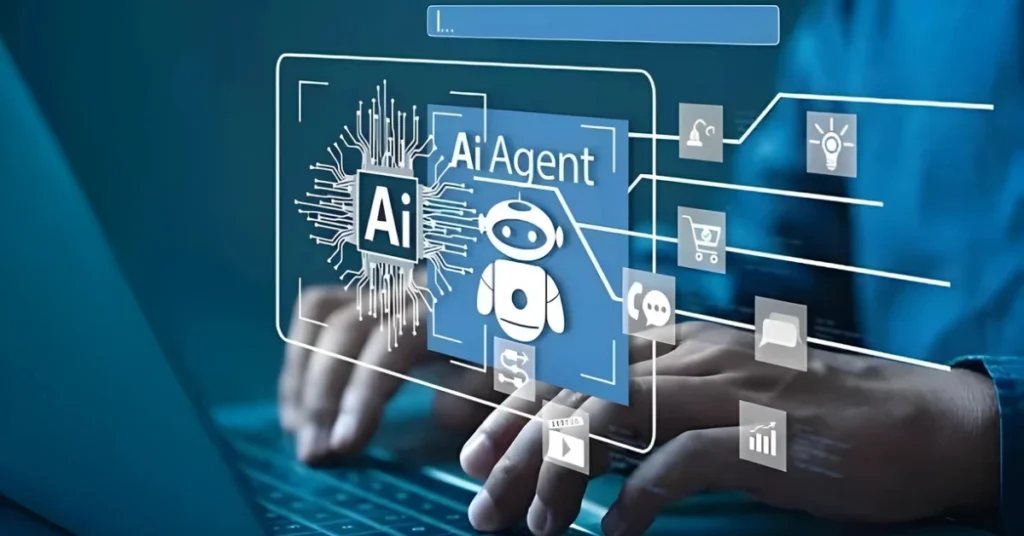
From first look AI agent seem to have commonality with widely used AI based technology called AI copilots. They are often integrated into workplace applications. AI copilots are virtual AI assistants working with clients to assist them in their work operations using information and computation.
Practically speaking however two tools perform different tasks and requirements. If they are combined in multi agent systems capabilities of both are able to complement one another by fostering thoughtful approach to decision making and cooperation. Learn how copilots and agents collaborate to address challenges and improve productivity throughout company…
- Customization and intuitive interaction: Backed by conversational AI copilots that act as an intuitive interface to allow the AI agent and users to cooperate. agents can be controlled by the user using natural human voice and interact with them directly via copilots integrated within their primary application for business. Copilots also provide guidance low code as well as no code platforms for creating and scaling intelligent agents that are custom designed. Copilots provide guided workflows that establish tools and data sources, and guidelines the agent will need to fulfill its duties.
- CollaborationDeeply integrates into data from business and operational processes AI copilots and agents work together to finish tasks. Copilots are agent orchestrators deciding which agents are required to meet requests of users. They are embedded across various departmental applications Copilots can also link agents of collaborative networks thus they can work in conjunction instead of working on their own.
- Dynamic functionSome jobs benefit from complete automation. Others require assistance of human in step by step manner. In harmonious partnership AI copilots and agents can be used in both situations. Copilots can provide assistance in real time when users are at work gathering and organizing data assisting with business queries and generating insights to aid in making decisions and suggesting solutions. Agents are able to meet both requirements. They are able to collaborate with users in order to collect additional information or to approve decisions.. that impact business process. They are also able to operate independently in their own independent entities resolving problems in background without need for continuous involvement.
Best Practices
Activity logs: To tackle issues that arise from multiagent dependencies, developers can offer users the ability to view a record of agents’ actions. These actions could involve the use of external tools as well as the description of outside agents that were used to achieve the end goal. Transparency gives users access to the process of making decisions through an iterative process and gives them a chance to identify errors, and increases confidence.
Interruption: Preventing a self-contained AI agent from running for excessively long durations is advised. Particularly in case of in case of infinite feedback loops changes in access of certain tools or malfunction due to design defects. way to achieve this is to implement interruptibility.
The control over this process requires allowing humans choice of gracefully stopping sequence of activities or even whole process. Deciding when and how to shut down operation of an AI agent is matter of prudence because some shutdowns may result in more harm than good. It could be more beneficial to let agent.. that is in error to assist in an emergency situation rather than completely shutting down system down.
Unique Agent Identifiers: To minimize the possibility that agentic systems are used to commit crimes, Unique identifiers are able to be used. If these identifiers were needed by agents for access to external systems tracking the identity of agents, developers, deployers, and users would be much easier.
This strategy adds an important level of accountability. traceability method helps to identify responsible party in event.. that an agent is responsible for an unintentional harm or malicious usage. In end this type of security measure will create more secure working setting to AI agent.
Human supervision: to help with the learning process of an AI agent, particularly in the beginning stages of their development in a new setting. It can be beneficial to have some form of supervision by a human. Therefore, with these guidelines AI agent is able to compare its performance with expectations and then make any necessary adjustments. Feedback like this helps to improve an agent’s ability to adjust to user preferences.
In addition to this security and security its good idea to seek human approval before an AI agent is able to take decision.. that has significant impact. In particular any actions.. that range from sending out mass emails to trading in financial instruments should need humans for confirmation. Certain levels of monitoring by humans is advised in these high risk areas.
FAQ
What is an AI agent?
An AI agent is an intelligent software system that can perform tasks, make decisions, and learn from experience — all on behalf of humans. It works with a level of autonomy to accomplish goals.
What are the main abilities of AI agents?
AI agents can process multimodal data (like text, images, and audio), reason, plan, learn, collaborate, and act independently. They can also use external tools to perform advanced tasks.
What challenges do AI agents face?
AI agents can struggle with emotional understanding, ethical decision-making, unpredictable environments, and high resource costs. They also pose risks like data privacy concerns and feedback loop issues.
How are AI agents different from AI copilots?
AI agents operate autonomously, often in the background. AI copilots assist users directly with interactive tasks. When combined, copilots guide the agents, enabling smarter, collaborative problem-solving.
